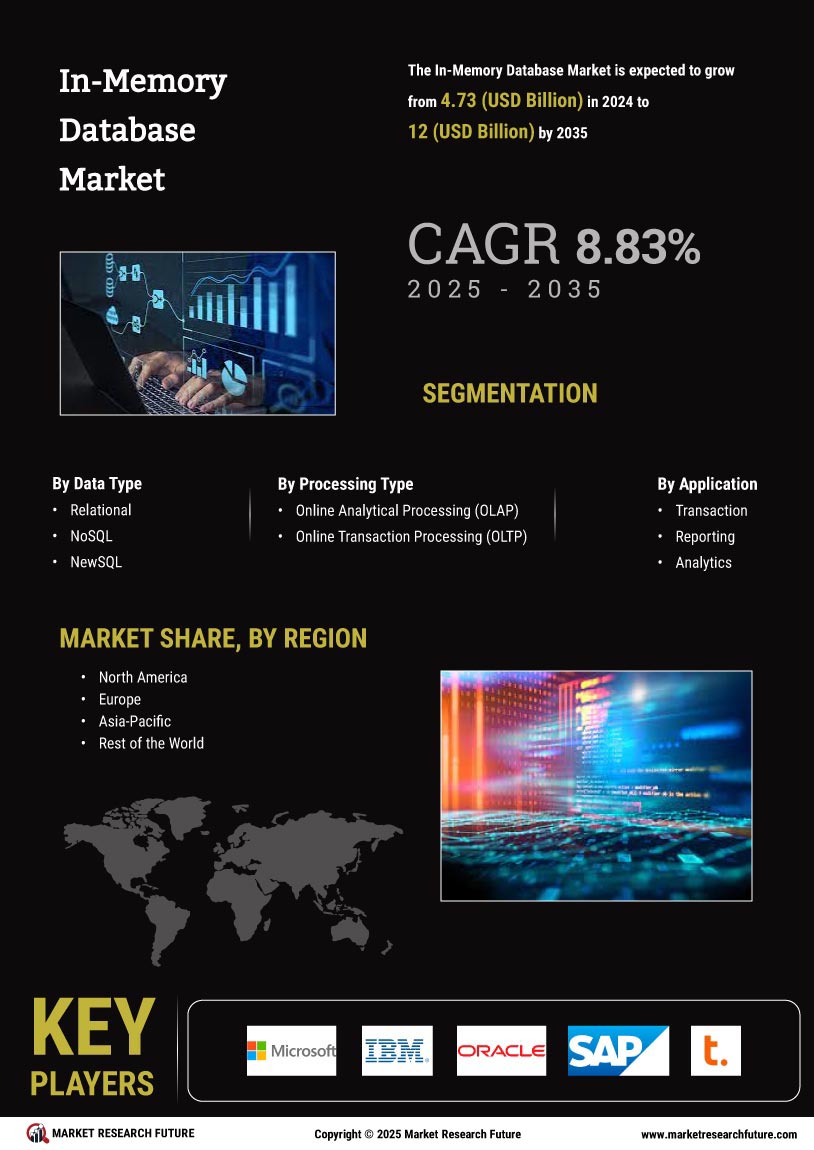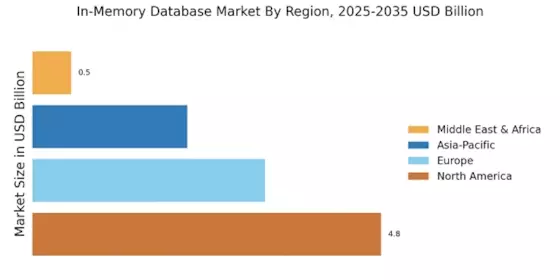Increased Focus on Customer Experience
The In-Memory Database Market is witnessing a heightened focus on customer experience as businesses strive to meet evolving consumer expectations. Companies are leveraging in-memory databases to provide personalized services and real-time interactions, which are essential in today's competitive landscape. By utilizing in-memory databases, organizations can analyze customer behavior and preferences instantaneously, allowing for tailored marketing strategies and improved service delivery. This shift towards customer-centric approaches is driving investments in in-memory database technologies. As a result, the market is anticipated to expand, with projections indicating a potential increase in market size by over 15% in the next few years. The ability to enhance customer experience through rapid data processing is likely to be a key differentiator for businesses in various sectors.
Rising Adoption of Big Data Technologies
The In-Memory Database Market is significantly influenced by the rising adoption of big data technologies. As organizations generate and collect vast amounts of data, the need for efficient storage and processing solutions becomes paramount. In-memory databases offer the capability to handle large datasets with speed and efficiency, making them an attractive option for businesses looking to leverage big data analytics. The integration of in-memory databases with big data frameworks, such as Hadoop and Spark, is becoming increasingly common. This synergy allows for enhanced data processing capabilities, enabling organizations to extract valuable insights from their data. Market analysts suggest that the in-memory database segment could capture a substantial share of the overall big data market, which is expected to reach several billion dollars in the coming years.
Growing Demand for Real-Time Data Processing
The In-Memory Database Market is experiencing a surge in demand for real-time data processing capabilities. Organizations are increasingly recognizing the necessity of immediate data access to enhance decision-making processes. This trend is particularly evident in sectors such as finance and e-commerce, where timely insights can lead to competitive advantages. According to recent estimates, the market for in-memory databases is projected to grow at a compound annual growth rate of approximately 20% over the next five years. This growth is driven by the need for businesses to analyze large volumes of data instantaneously, thereby improving operational efficiency and customer satisfaction. As companies continue to prioritize agility and responsiveness, the in-memory database solutions are likely to become integral to their data management strategies.
Growing Need for Scalability and Flexibility
The In-Memory Database Market is increasingly driven by the growing need for scalability and flexibility in data management solutions. As businesses expand and their data requirements evolve, traditional databases often struggle to keep pace. In-memory databases offer the advantage of dynamic scalability, allowing organizations to adjust their data processing capabilities in real-time. This flexibility is particularly beneficial for companies experiencing rapid growth or seasonal fluctuations in data volume. Furthermore, the ability to deploy in-memory databases in cloud environments enhances their scalability, making them suitable for a wide range of applications. Market forecasts suggest that the demand for scalable in-memory database solutions could lead to a market growth rate of around 22% in the coming years, as organizations prioritize adaptable data management strategies.
Advancements in Technology and Infrastructure
The In-Memory Database Market is benefiting from advancements in technology and infrastructure. Innovations in hardware, such as faster processors and increased memory capacities, are enabling more efficient in-memory database solutions. Additionally, the development of software frameworks that support in-memory processing is enhancing the capabilities of these databases. As organizations invest in modernizing their IT infrastructure, the adoption of in-memory databases is expected to rise. This trend is particularly relevant for industries that require high-performance computing, such as telecommunications and healthcare. Analysts indicate that the technological advancements in this space could lead to a market expansion of approximately 18% over the next few years, as businesses seek to optimize their data management practices.


















Leave a Comment